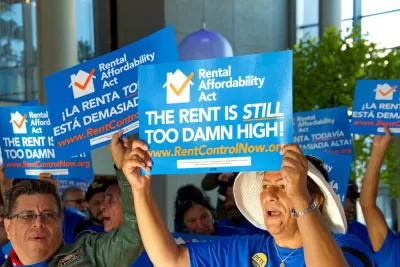Inclusionary zoning requires new developments to include affordable units, but many cities allow developers to bypass this by paying an off-site fee. Is the fee-out option getting unfairly demonized?

The question of integrating affordable housing units required by inclusionary zoning on-site versus allowing developers to pay a fee to locate them off-site has long been a contentious one. In this Q&A, Sam Moss, executive director of the Mission Housing Development Corporation in San Francisco, explains why he thinks that the fee-out option is unfairly demonized.
Miriam Axel-Lute: Last year on social media you posted saying something to the effect of, “Hey, look: everybody talks about on-site units as the holy grail of inclusionary zoning, but I think off-site fees are actually better.” Why do you think people go for the on-site units, and why do you think that off-site is better?
Sam Moss: If a developer chooses to fee out, [and if that fee is] properly disseminated to nonprofit affordable housing developers through something like a housing trust fund or an affordable housing fund, that is the most efficient, most valuable use of the fee. Building on-site is supported by a lot of people, mainly because of how long it takes to build the 100 percent–affordable projects. It can take years longer than the market-rate project that produced the fee. There is something to be said for getting below-market-rate units built at the exact same time as the market-rate development.
But at the end of the day, using the fees on affordable housing nonprofits leverages each dollar into $3 or so, because of tax credits and bonds and things like that. I believe that’s the most valuable use.
[Why do I think that off-site is] better? I don’t know that it’s necessarily better. [But] I am disappointed and frustrated over the demonizing of the fee-out option. I can see why people would just default to demanding on-site, but I do still believe that the most valuable, efficient use of the funds is to allow a nonprofit developer to utilize the fee.
Miriam Axel-Lute: So you’re saying more units would be built using the fee-out option?
Yes, because the nonprofit can leverage the fee dollars with other sources of funding, you essentially get more units. So, for every dollar that the market-rate developer would have spent building units on-site, that same amount of money can be utilized to, in some cases, triple the amount of overall funding that’s available for the affordable units, and thus build more units.
Miriam Axel-Lute: One of the reasons people like on-site is it can be a way to force affordable units into areas that would put up a NIMBY fight against a totally affordable development. How would you respond to this?
...
FULL STORY: The Case for Letting Developers Pay Not Build

Alabama: Trump Terminates Settlements for Black Communities Harmed By Raw Sewage
Trump deemed the landmark civil rights agreement “illegal DEI and environmental justice policy.”

Planetizen Federal Action Tracker
A weekly monitor of how Trump’s orders and actions are impacting planners and planning in America.

The 120 Year Old Tiny Home Villages That Sheltered San Francisco’s Earthquake Refugees
More than a century ago, San Francisco mobilized to house thousands of residents displaced by the 1906 earthquake. Could their strategy offer a model for the present?

BLM To Rescind Public Lands Rule
The change will downgrade conservation, once again putting federal land at risk for mining and other extractive uses.

Indy Neighborhood Group Builds Temporary Multi-Use Path
Community members, aided in part by funding from the city, repurposed a vehicle lane to create a protected bike and pedestrian path for the summer season.

Congestion Pricing Drops Holland Tunnel Delays by 65 Percent
New York City’s contentious tolling program has yielded improved traffic and roughly $100 million in revenue for the MTA.
Urban Design for Planners 1: Software Tools
This six-course series explores essential urban design concepts using open source software and equips planners with the tools they need to participate fully in the urban design process.
Planning for Universal Design
Learn the tools for implementing Universal Design in planning regulations.
Clanton & Associates, Inc.
Jessamine County Fiscal Court
Institute for Housing and Urban Development Studies (IHS)
City of Grandview
Harvard GSD Executive Education
Toledo-Lucas County Plan Commissions
Salt Lake City
NYU Wagner Graduate School of Public Service




























